Tennis Elbow (Lateral Epicondylitis)
Tennis Elbow
Mild discomfort in the elbow region is often nothing to worry about, but for those who experience more severe pain, the tennis elbow can be a real nuisance. This condition is caused by overuse of the muscles and tendons in the arm and leads to inflammation and pain. While there is no one-size-fits-all treatment for tennis elbow, some tips can help you manage the symptoms and get back to your normal routine.
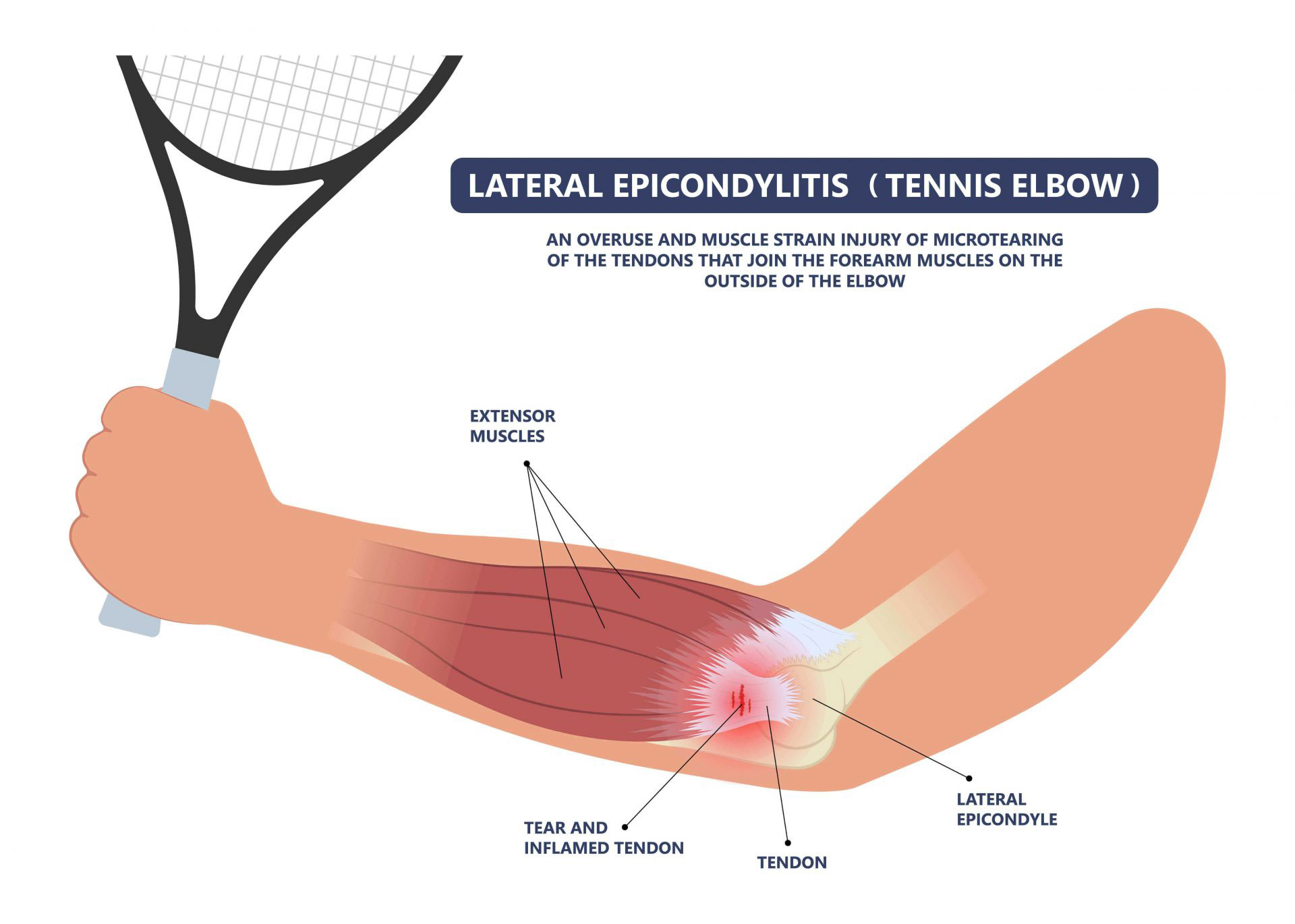
What is Tennis Elbow or Lateral Epicondylitis?
Tennis elbow, or lateral epicondylitis, is a condition that causes pain on the outside of the elbow. The pain is usually worse when you bend your arm or grip something. Tennis elbow is common in people who play tennis, but it can also affect other people who don’t play tennis. The condition is most common in people between the ages of 40 and 60.
What causes Tennis Elbow?
Tennis elbow is a condition that results from inflammation of the tendons in the elbow. These tendons attach the muscles of the forearm to the bone. The condition is also known as lateral epicondylitis. Tennis elbow is a type of repetitive strain injury (RSI) resulting from repetitive arm movements. It occurs when the muscles and tendons in the forearm are overloaded by repetitive motions. The condition is common in racquet sports, but can also occur in other athletes and individuals who perform repetitive motions of the arm and elbow.
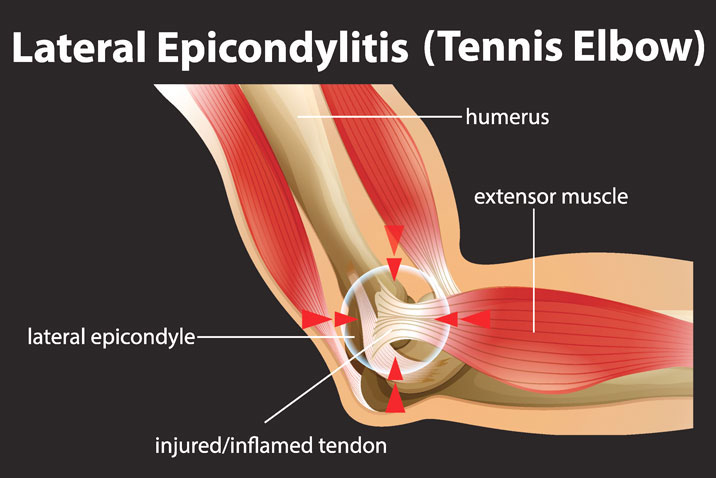
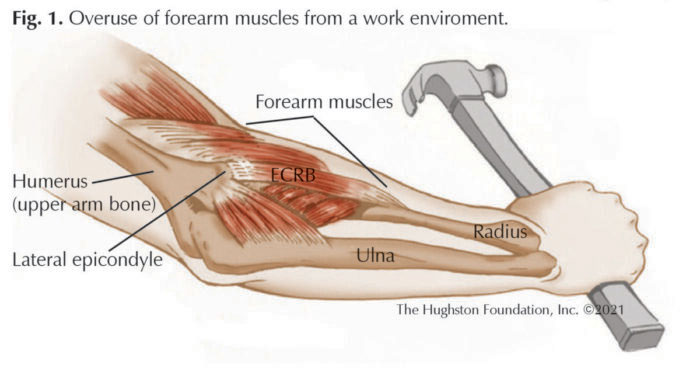
Symptoms of Tennis Elbow
The most common symptom of tennis elbow is pain on the outside of the elbow that gets worse with activity. Other symptoms may include the following
-Tenderness when pressure is applied to the lateral epicondyle
-Weakness in the forearm muscles
-Difficulty grasping objects
-Pain when extending the arm fully or pronating the forearm (turning the palm down)
If you have these symptoms, see your doctor. He or she will ask about your medical history and symptoms and examine your elbow. X-rays may be taken to rule out other conditions. In some cases, an MRI or other imaging tests may be needed.
Treatment for tennis elbow
Treatment for tennis elbow may include:
-Rest
-Ice
-Anti-inflammatory medications
-Corticosteroid injections
-Physical therapy
-Tennis elbow surgery (in rare cases)
Most people with tennis elbow improve with nonsurgical treatments. However, some people may need surgery to release the tendon from the upper arm bone or to remove damaged tissue. If you have elbow pain, follow your doctor’s instructions to treat tennis elbow and take steps to avoid reinjury.
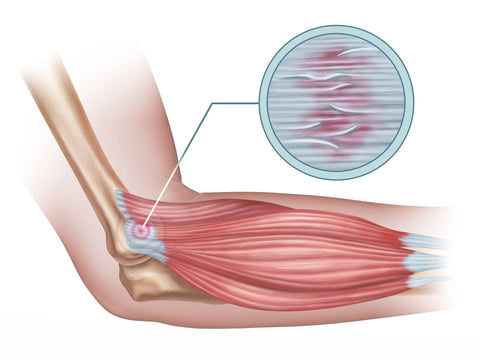
Recovery from Tennis Elbow
Most people with tennis elbow recover within 6 to 12 months with rest, ice, and over-the-counter pain relievers. However, some people may need physical therapy or surgery. Recovery time may be longer if you have a more severe case of tennis elbow or if you have had the condition for a long time.
If you have pain from the tennis elbow, try to rest your arm and avoid activities that make the pain worse. You can also take over-the-counter pain relievers such as ibuprofen (Advil, Motrin) or naproxen (Aleve) to help reduce the pain. Applying ice to the affected area for 15 minutes several times a day can also help.
If your pain does not improve with home treatment, you may need to see a doctor. Your doctor may recommend physical therapy or injections of corticosteroids to help reduce the pain. In some cases, surgery may be necessary to remove the damaged tissue.
After treatment, it is important to take care of your arm to prevent tennis elbow from coming back. Be sure to warm up and stretch before playing any type of sport. Use proper technique when playing sports or doing other activities that put stress on your arm. If you have to grip something tightly, use a light grip and take frequent breaks. Wearing an elbow brace can also help to prevent tennis elbow from coming back.
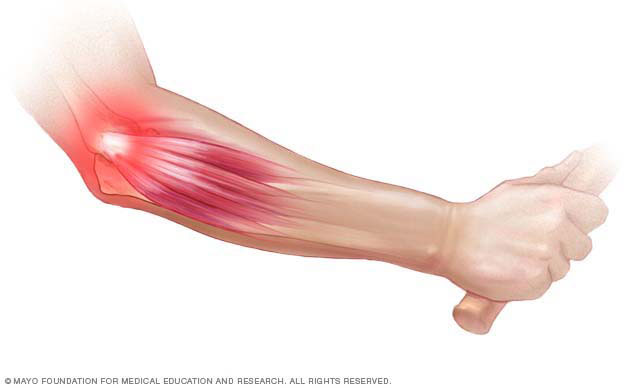
Tips for preventing Tennis Elbow
Following these tips may help you prevent tennis elbow or reduce your risk of developing it:
- Use muscle stimulating techniques when playing tennis or participating in other activities that put stress on your elbow.
- Warm-up and stretch properly before playing tennis or participating in other activities.
- Use appropriate equipment. For example, use a racket with the correct grip size and string tension.
- Use an over-the-counter pain reliever if you have pain.
- Seek professional help if you have persistent pain or discomfort.
- Avoid activities that put stress on your elbow until your symptoms have resolved.
- Gradually increase your activity level as you regain strength and flexibility.
- Use a supportive elbow strap or sleeve if recommended by your doctor or physical therapist.
- Participate in a physical therapy program to stretch and strengthen the muscles and tendons around your elbow.
- Undergo acupuncture or other alternative therapies if recommended by your doctor.
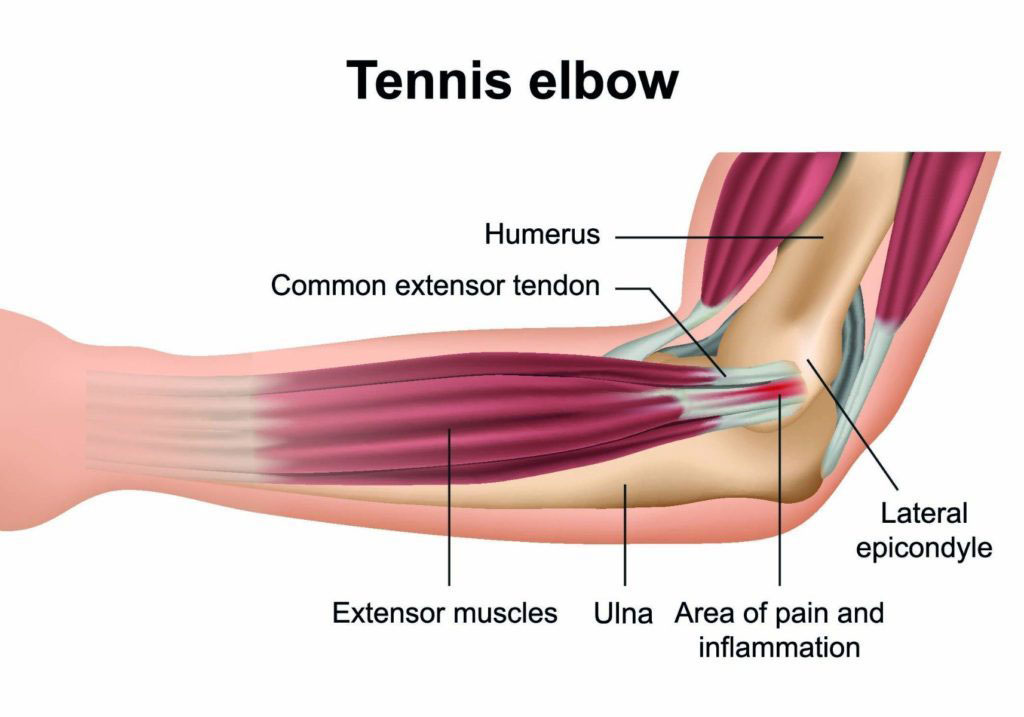
Tennis Elbow Medically Reviewed: FAQs
Tennis elbow, or lateral epicondylitis, is a condition that causes pain in the elbow joint and forearm. It is caused by overuse of the arm and wrist and can be treated with rest, ice, and medication.
The most common symptom of the tennis elbow is pain on the outside of the elbow. This pain can radiate down the forearm and into the hand. Other symptoms include weakness in the arm and a burning or tingling sensation.
Treatment for tennis elbow typically includes rest, ice, and over-the-counter pain medication. Physical therapy may also be recommended. In severe cases, surgery may be necessary.
There are several things you can do to reduce your risk of developing this overuse injury, such as warm-up before playing and using proper technique. You should also avoid overusing your upper arm and wrist.
There is no one definitive answer to this question, as different people may find different treatments to be more effective for them. However, some possible treatments for tennis elbow include rest, ice, heat, massage, physical therapy, and NSAIDs. Surgery is usually only recommended as a last resort.
The main cause of tennis elbow is overuse of the arm muscles and tendons in the forearm, which can lead to inflammation and pain.
However, there are a number of other factors that can contribute to the development of tennis elbow, including age, poor form when playing tennis, and using equipment that is too heavy or too light.
If you experience pain and tenderness on the outside of your elbow, it is most likely tennis elbow.
However, it is always best to consult with a doctor or other medical professional to confirm the diagnosis. Other conditions that can cause similar symptoms include golfer’s elbow and radial tunnel syndrome.
If you experience pain and tenderness on the outside of your elbow, it is most likely tennis elbow.
However, it is always best to consult with a doctor or other medical professional to confirm the diagnosis. Other conditions that can cause similar symptoms include golfer’s elbow and radial tunnel syndrome.
Have you been injured at some point in your journey?
Are you not achieving your highest level of function?
We’ve helped hundreds of people at all walks in life
get back to performing their best painfree!
3 Ways to Level Up Your Rehab and Injury Prevention With Us





